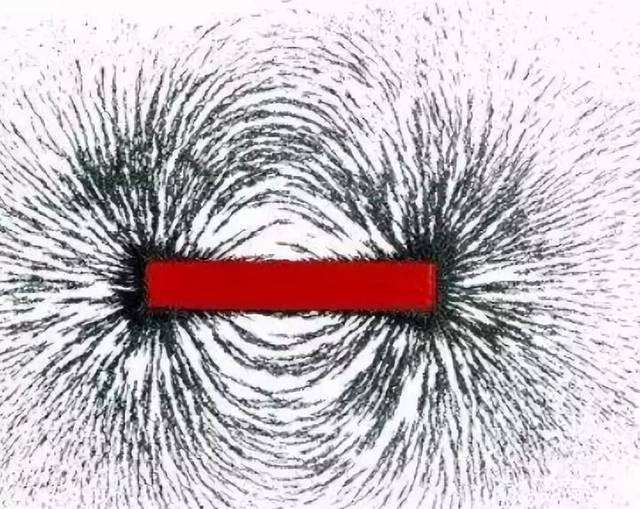What is the Principle of Magnetization?
Magnetization method and principle
The magnetism of sintered NdFeB material mainly comes from its easily magnetizable crystal structure, which can be highly magnetic under the action of the external strong magnetic field, and its magnetism will not disappear after the external magnetic field disappears.
In the production and preparation of sintered NdFeB material, magnetization is the last step before the delivery of the finished product, but the magnetic field orientation of the NdFeB blank is already decided when the magnetic powder is pressed into the blank, i.e. the magnetization direction.
What is Magnetization?
- The magnetization of NdFeB magnet is mainly in the following ways: axial magnetization, radial magnetization, thickness direction magnetization, axial multi-stage magnetization, inner circle radiation magnetization, radiation magnetization, etc.
- The magnetization process of NdFeB is simple, generally, the magnetizable object to be magnetized is placed in the magnetic field formed by the coil with direct current and magnetized by the magnetizer. The magnetization process is completed with a single step of the foot.
- Multi-pole magnetization is the process of magnetizing more than two pairs of poles on the same magnet. Multipole magnetization is a complex and specialized technology. Multipole magnetization is achieved mainly by using pulsed magnetic fields, which are related to the working characteristics of the magnetizer, the magnetizing head, and the performance index of the magnet itself. The principle is to magnetize permanent magnets such as NdFeB by using the pulsed magnetic field generated by the instantaneous discharge of high current, which is usually composed of a capacitor bank, SCR, control circuit, and charging head.
- Generally, magnets with thin thicknesses will be magnetized axially, and those with thicknesses greater than the diameter will be magnetized radially. Overall, the smaller the diameter of the magnet, the more difficult it is to magnetize. If the magnetization direction is wrong in this process, it will be a very troublesome thing. To demagnetize the magnet, you need to put the magnet in a high-temperature environment (250-300 degrees), or demagnetize the machine.
- Tile magnets used in motors are often magnetized radially.
In addition to the above-mentioned single-pole magnetization, sintered NdFeB can also be multi-pole magnetized according to the actual needs, which can present multiple N and S poles on one plane. The special design of magnetizing jigs with size and pole head will incur the extra cost of the magnetizing jig.
Magnetization direction
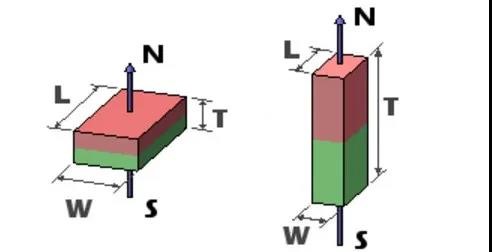
Block magnet magnetization
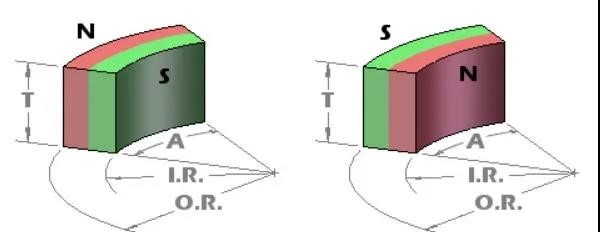
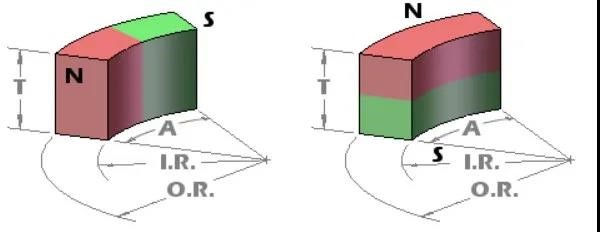
Arc magnet magnetization
There are three general magnetization methods for magnetic materials.
- Unsaturated magnetization: The magnetization energy is less than 95% of the saturation magnetization energy, this magnetization is reversible, and the remanent magnetization will gradually decrease with time and magnetic field changes.
- Saturation magnetization: The magnetization energy required to reach the inflection point of magnetization characteristics, which is generally 1.5 times or 2 times the endogenous coercivity (or remanent magnetization), which will not produce demagnetization.
- Supersaturation magnetization: The magnetization energy reaches more than 3 times the endowment coercivity, and the surface magnetization will only change slightly with the change of magnetic field, which will be adopted for the environment with high magnetic energy requirement.
Specification of conventional magnets
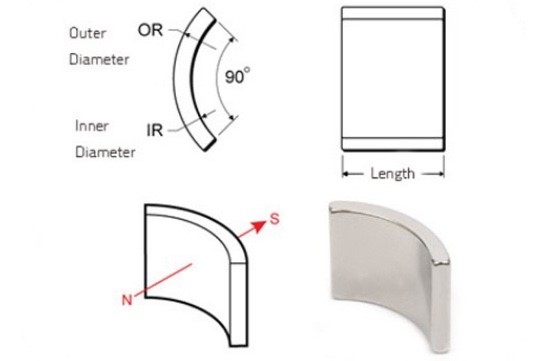
Arc-Magnet OR*lr*L
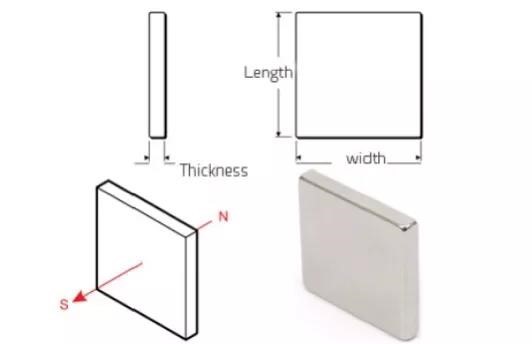
Block-Magnets L*W*T
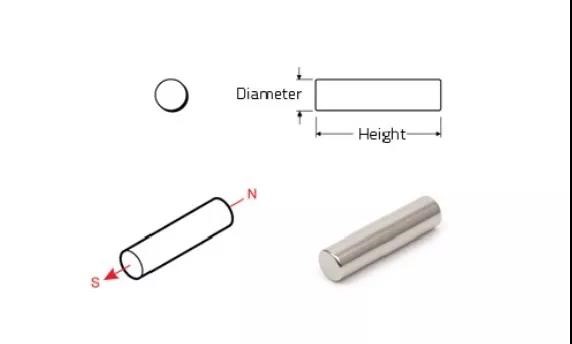
Cylinder-Magnets D*H
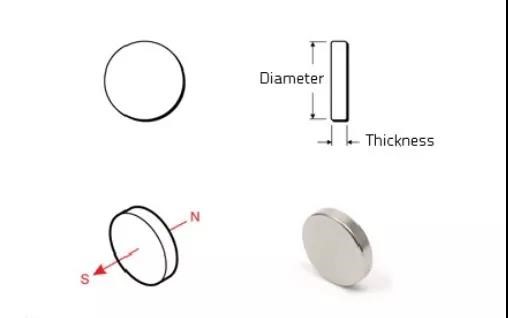
Disc-Magnets D*T
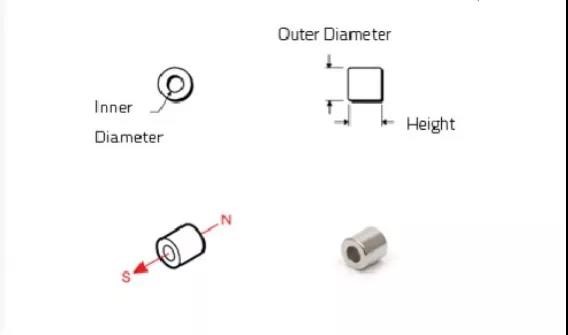
Tube-Magnets OD*ID*H
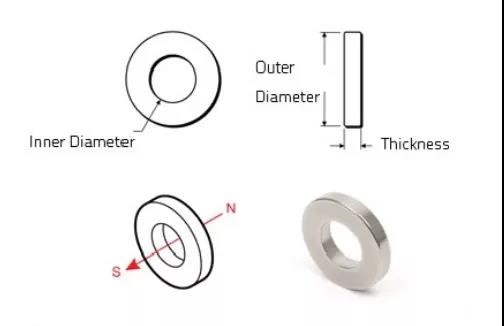
Ring-Magnets OD*ID*H
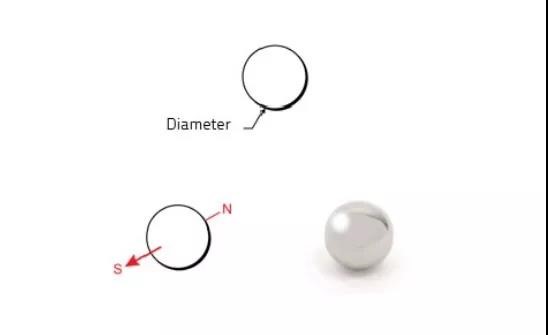
What is Magnetizer?
Magnetizer is a tool to magnetize magnetic material or magnetic device magnets by applying a magnetic field to the NdFeB product to be magnetized. If the magnetization field does not reach the technical saturation field, the remanent magnetization Br and the endogenous coercivity Hcj of the permanent magnet will not reach the desired value.
The energy of the magnetizer is firstly determined by the size of the magnetized product, the magnetizing direction, and the size of the magnetizing tooling, then the size of the magnetic field in the center of the tooling is calculated, the size of the tooling magnetic field should be 3-5 times of the coercivity of the magnet, after that the magnetizing current is calculated, the capacity of the magnetizing storage capacitor is determined according to the current and the voltage of the magnetizer, and finally, the energy of the magnetizer is determined.
